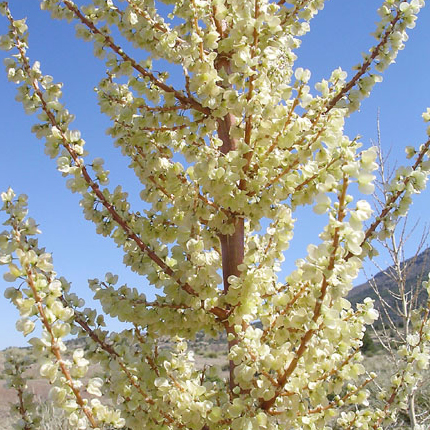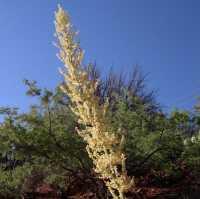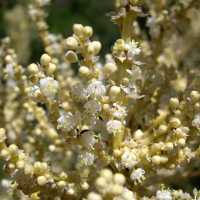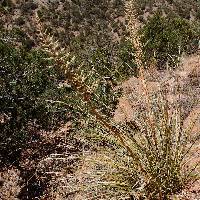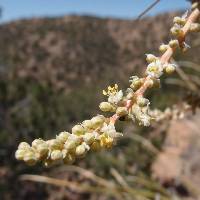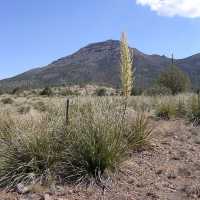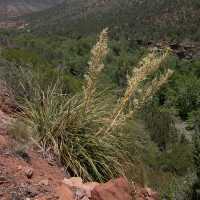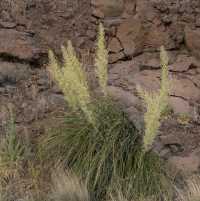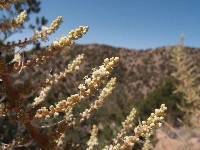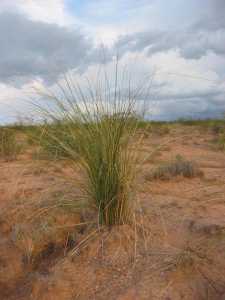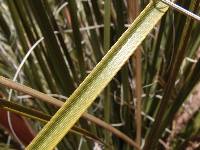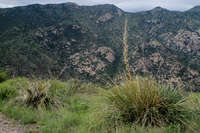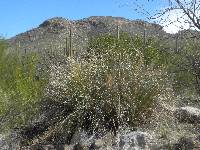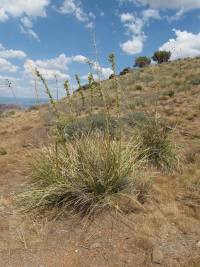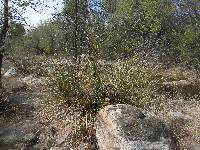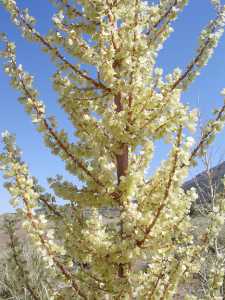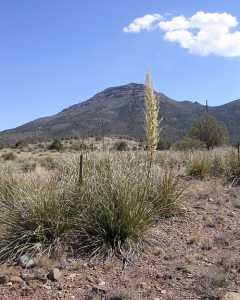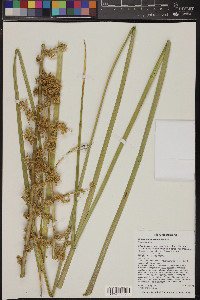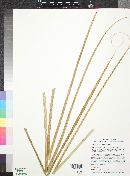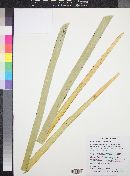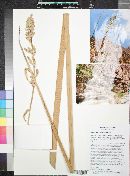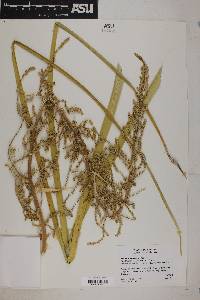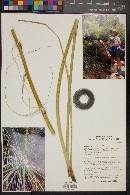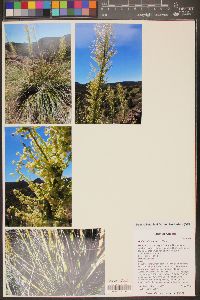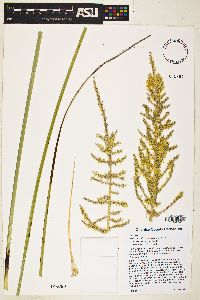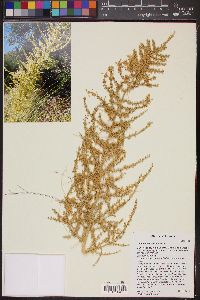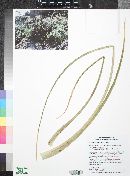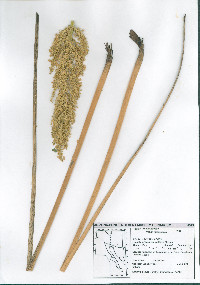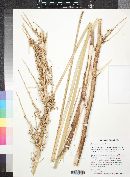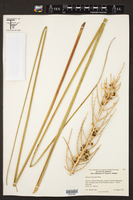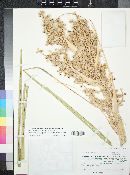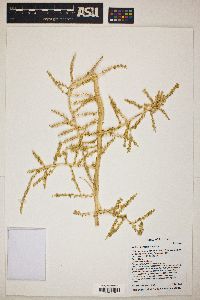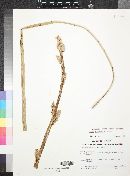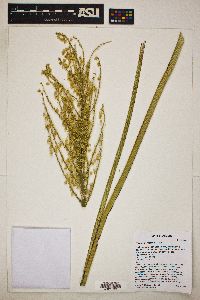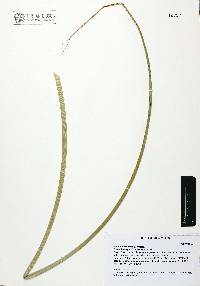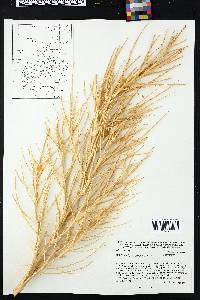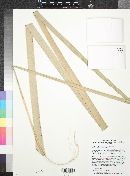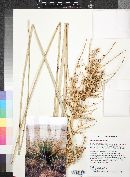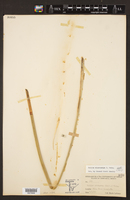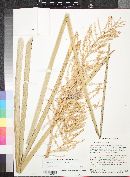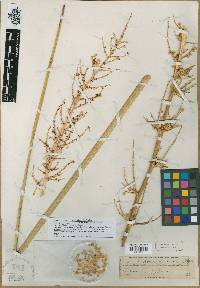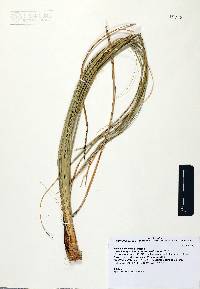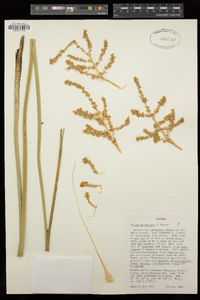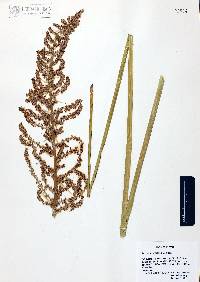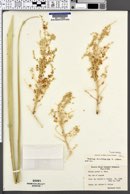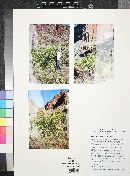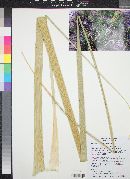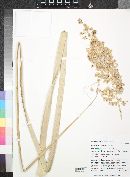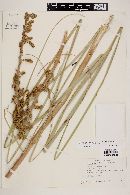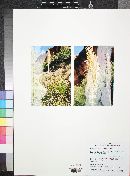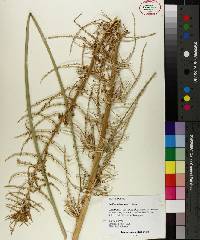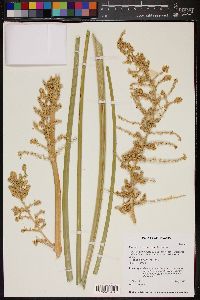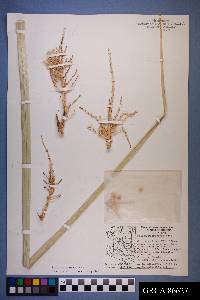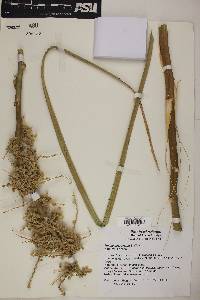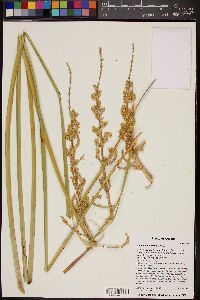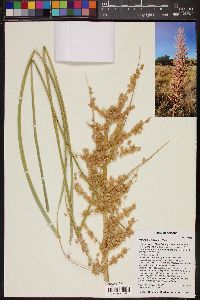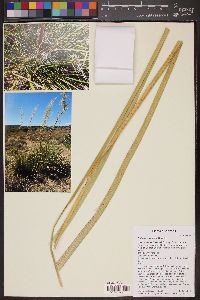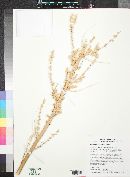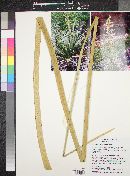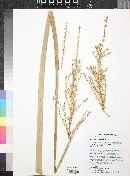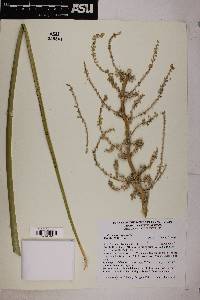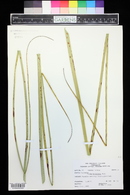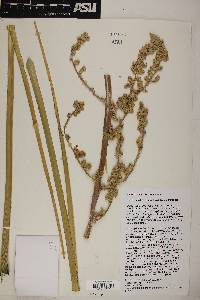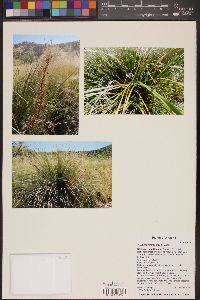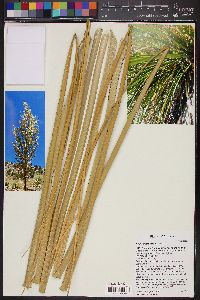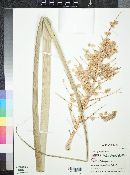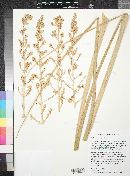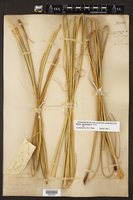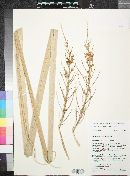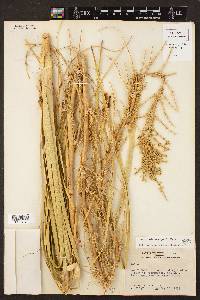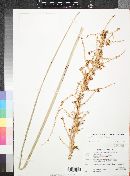
|
|
|
|
Family: Asparagaceae
sacahuista, more...Sacahuista Bear-Grass, beargrass, Bear Grass (es: palmilla, sotol chiquito, sacahuista, palmilla para techar casas)
|
Plants acaulescent, cespitose; rosettes from vertical, subterranean, branched caudices. Leaf blades wiry, lax, concavo-convex, 80-130 cm ´ 5-12 mm, not glaucous; margins serrulate, with close-set, cartilaginous teeth; apex lacerate; inflorescence leaf blades curling distally, 10-50 cm. Scape 3-15 dm, 1.2-2.5 cm diam. Inflorescences paniculate, 4-12 dm × 10-30 cm, surpassing leaves; bracts caducous, rarely persistent; bractlets 2-5 mm, slightly erose. Flowers: tepals white, 1.5-3.3 mm; fertile stamens: filaments 1.6-1.9 mm, anthers 1.2-1.4 mm; infertile stamens: filaments 0.9-1.2 mm, anthers 0.3-0.5 mm; fruiting pedicel erect, proximal to joint 1-2 mm, distal to joint 3-6 mm. Capsules hyaline, thin-walled, inflated, 4.2-6 × 5.4-6.4 mm, indistinctly notched at apex. Seeds loosely invested in capsules, compressed, 2.2-3.4 × 1.5-3 mm. 2n = 38. Flowering mid--late spring. Rocky hillsides, desert grasslands, oak and pinyon pine-juniper woodlands; 900--1900 m; Ariz., N.Mex.; n Mexico. D. S. Correll and M. C. Johnston (1970) included Nolina microcarpa in their flora of Texas; however, they reported that they had seen no specimen from that state, nor have I. This species is found primarily from western New Mexico through central Arizona. It forms large clumps up to 2 m in diameter and inflorescences that generally are exserted from the basal leaf rosettes. Considerable variation occurs, some of it geographically restricted to southeastern Arizona and southwestern New Mexico. Most such plants from the latter areas have been referred to N. texana or N. caudata, but are here included in N. microcarpa. In the Grand Canyon area, there are variants that have been referred to N. parryi because in width the leaves approach those of N. parryi and they are serrulate. These plants, however, are acaulescent and also are here included in N. microcarpa. B. J. Albee et al. (1988) reported N. microcarpa on rocky slopes in canyons in Washington County, Utah, but the more recent online version of that work excludes it from Utah.
Wiggins 1964, Benson and Darrow 1981, Cronquist et al. 1977, Kearney and Peebles 1979, FNA 2003, Allred and Ivey 2012 Common Name: sacahuista Duration: Perennial Nativity: Native Lifeform: Subshrub General: Acaulescent rosette with the appearance of a large, coarse grass; from a large woody subterranean caudex. Leaves: Clustered in a basal rosette, blades 60-120 cm long, 6-12 mm wide, margins unevenly serrulate-scabrous, tips split into tufts 5-12 cm long; narrow channels run the length of the leaf. Flowers: Scapes erect, to 1.5 m tall; panicles narrow, the primary branches 15-50 cm long, ascending; secondary branches one-half as long; bracts subtending lower branches lance-linear, 5-12 mm wide, 8-15 cm long, attenuate; flowers campanulate, whitish, 2-4 mm long, tepals oblong to ovate. Fruits: Capsules subglobose, papery and inflated, deeply notched at apex, rounded to shallowly notched at base, 4-5 mm high, 6-8 mm wide, 3-locular with 3 seeds; seeds compressed, 2-3 mm. Ecology: Found on rocky slopes and hills from 3,000-6,000 ft (914-1829 m); flowers May-July. Distribution: s UT, AZ, NM; south to n MEX. Notes: This is a widespread species in the southwest, distinguished by its rosette of drooping leaves with small prickles on margins, and the inflorescence stalk to 1.5 m tall with a branched panicle of small white flowers at the end. The drooping leaves distinguish it from Yucca, Agave, and Dasylirion, which all have stiff, erect leaves. There are a few other species of Nolina in the Southwest; N. microcarpa is the most common, and is distinguished by the woody trunk being underground; leaves < 12 mm wide; and serrulate leaf margins. Ethnobotany: Taken for rheumatism, for pneumonia and lung hemorrhages; the stalks were eaten; the seeds were made a flour or meal for bread or mush; the fruit was eaten raw or preserved; plant was used as a dye, for basketry, rugs, mats and other forms of weaving, for brushes, rope, and cord; the roots were used for soap; and the dried leaves were used as cooking tools. Etymology: Nolina is named for Abbe Pierre Charles Nolin (b. 1717) a French arboriculturalist, while microcarpa means having small fruits or seed pods. Synonyms: None Editor: SBuckley 2010, FSCoburn 2015, AHazelton 2015 |
|
|
|
This project was made possible in part by the Institute of Museum and Library Services [MG-70-19-0057-19].
Powered by Symbiota

